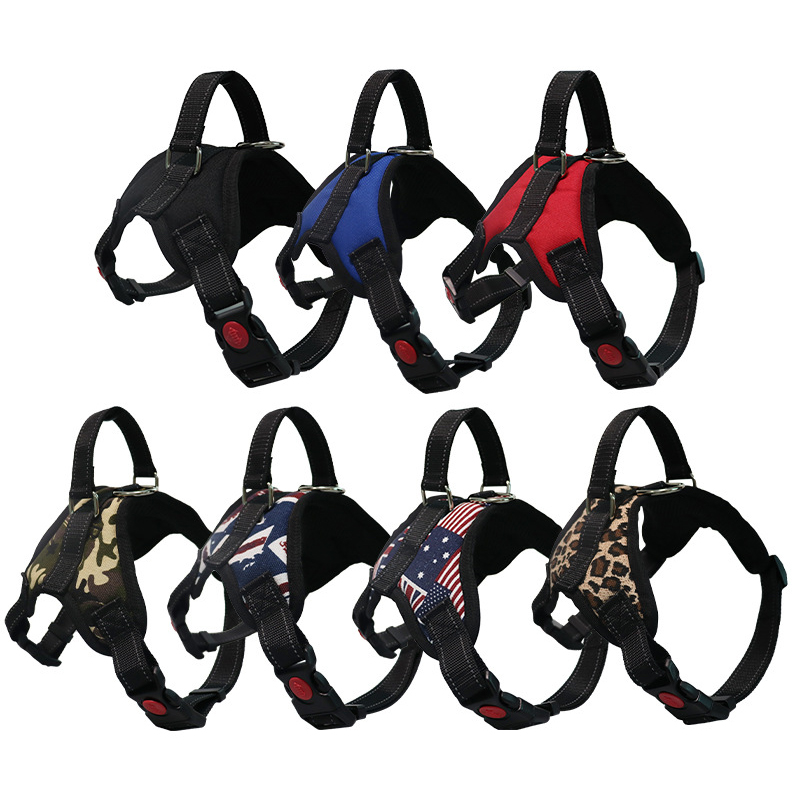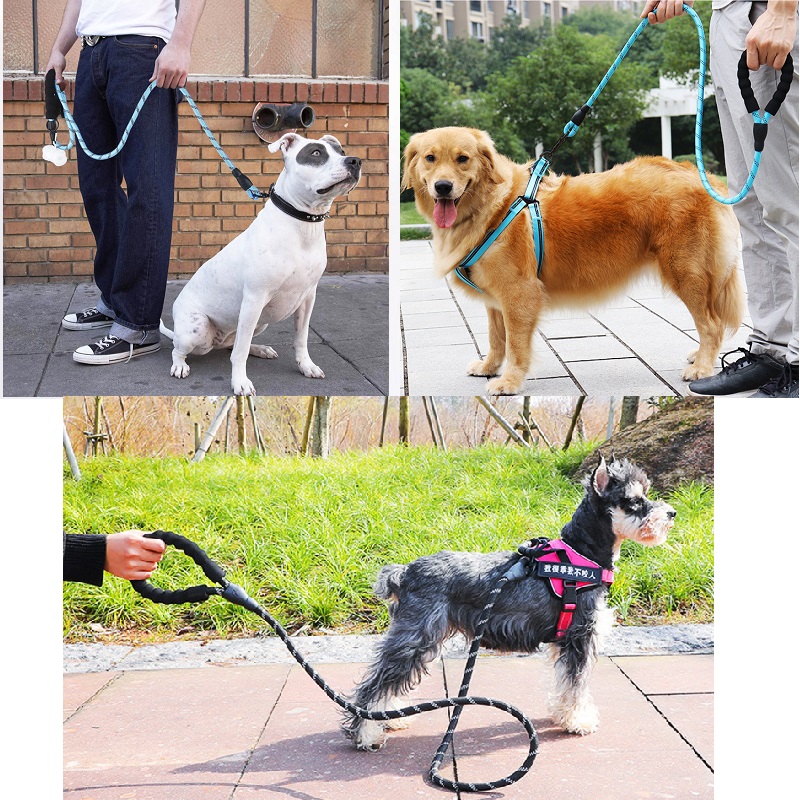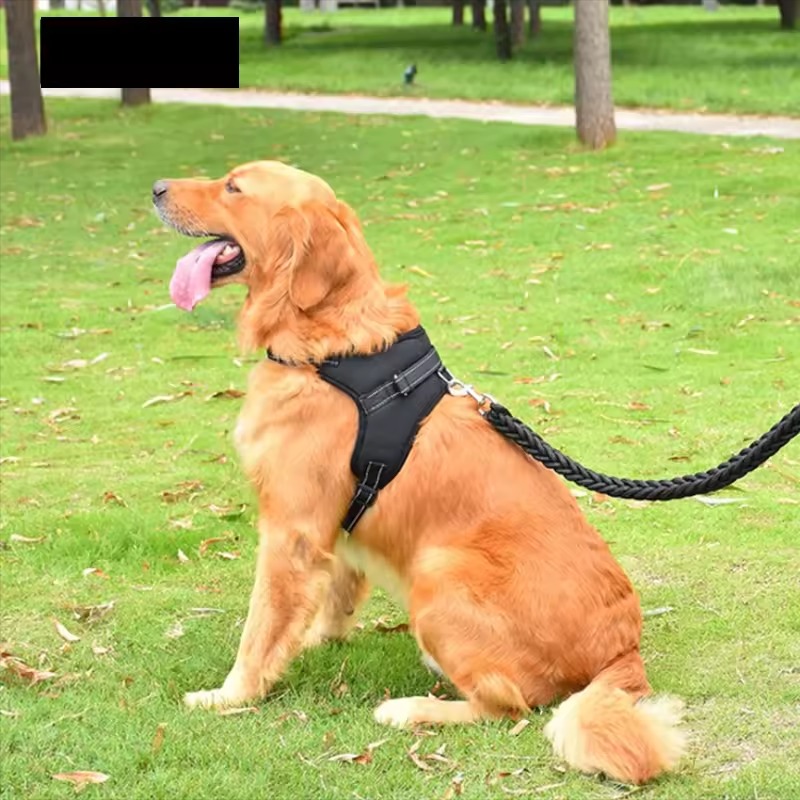Importance of a Proper Fit for Large Dogs
Choosing a suitable dog harness for large dogs is crucial for their comfort and safety. A harness that fits well prevents injuries and escape attempts during walks. It distributes pressure evenly across the chest and back instead of the neck. This can reduce pulling and make walking more pleasant for both dog and owner. With a proper fit, your large breed dog can move freely without chafing or restriction. Always ensure the harness allows for natural movement and does not pinch or rub. A harness that is too tight can cause discomfort or even lead to respiratory issues. On the other hand, a loose harness increases the risk of slips and escapes. Proper sizing is the key to finding a harness that offers control while keeping your dog happy and secure.

Types of Dog Harnesses for Big Breeds
Choosing the right dog harness for large dogs involves understanding the various types available. Each type offers different benefits and may suit different training levels or activities. Let’s discuss the most common ones.
No-Pull Dog Harnesses
No-pull dog harnesses are essential for large dogs that tend to pull on their leash. They have a unique design that discourages pulling by distributing pressure across the dog’s body. When the dog pulls, the harness tightens slightly, which signals the dog to stop. This type can make walks more manageable and safer, preventing strain on both the dog and the owner.
Step-In Dog Harnesses
Step-in dog harnesses are the go-to choice for ease of use. Your furry friend simply steps into the harness, and you clip it shut on their back. They’re great for dogs uncomfortable with harnesses going over their head. They provide quick fitting and removal, which is useful for large breeds who are often excited for their walks.
Adjustable Dog Harnesses
Adjustable dog harnesses are ideal for ensuring a perfect fit, as they can be customized to your dog’s size. This is particularly useful for growing dogs. They have straps that can be lengthened or shortened. Such harnesses offer versatility and longevity, making them a practical option for large dog breeds.
Key Features to Look For in a Large Dog Harness
When shopping for a dog harness for large dogs, it’s not just the type that matters. Key features also play a vital role in ensuring your dog’s comfort and safety. A quality harness offers more than just control; it provides peace of mind. Here are the essential features to consider.
Durability and Material
Durability is critical for a large dog harness. Look for strong fabrics such as nylon or polyester that can withstand pulling and daily wear. A harness with double-stitching or reinforced seams offers extra strength. The material should also be weather-resistant, handling every climate your adventurous large dog may encounter.
Reflective Options for Safety
Safety takes precedence, especially during evening walks. Harnesses with reflective strips or piping make your dog visible to motorists and cyclists. This is crucial for preventing accidents in low-light conditions. Some harnesses even integrate LED lights for maximum visibility. Never compromise on safety; always select a harness that makes your dog noticeable in darkness.
Comfort and Padding
Comfort can’t be overlooked, as an uncomfortable harness might deter your dog from enjoying their walks. Padding around the chest and shoulders helps prevent chafing. A breathable mesh lining keeps your dog cool during longer outings. A padded harness also helps distribute pressure more evenly, which is essential for large breeds that pull.

Measuring Your Dog for the Perfect Harness Fit
Finding the right fit is essential when selecting a dog harness for large dogs. Here’s a step-by-step guide to measure your dog accurately:
- Measure the Neck: Place a tape measure around the base of your dog’s neck, where a collar would sit. Ensure the tape is snug but not too tight. Write down this measurement.
- Measure the Chest: Find the broadest part of your dog’s chest, just behind the front legs. Wrap the measuring tape around this area and record the number. This is the chest girth, often the most vital measurement for a harness.
- Measure the Length: Some harnesses require back length. Measure from the base of the neck to the base of the tail. This helps identify the correct harness size.
- Check the Weight: While not a direct measurement, knowing your dog’s weight can also help in choosing the correct harness size.
- Consult Size Charts: Compare your measurements with the manufacturer’s size chart for the harness you’re considering. Size charts can vary, so it’s important to use the specific chart for the harness you want.
- Leave Room for Adjustment: A good harness should have adjustable straps. This way, you can ensure a snug fit as your dog grows or if its weight fluctuates.
- Test for Fit: Once you have a harness, perform a quick fit test. You should be able to slide two fingers under any strap. This means the fit is snug but not too tight.
Remember to routinely check the harness’s fit, especially if your dog is still growing or has changes in weight. A properly fitted harness is safer for your dog and makes walks more enjoyable for both of you.
Training Your Dog to Wear a Harness
Training your dog to wear a harness can be easy with patience and positive reinforcement. Start slow and make the experience positive. Here are steps to help your large dog get used to a harness.
- Introduce the Harness: Let your dog sniff and explore the harness. Give treats to create a positive association.
- Distract with Treats: Hold the harness open and coax your dog through with a treat. Praise them when they step through.
- Adjust the Fit: Once the harness is on, adjust the straps for a snug fit. Remember, you should fit two fingers under any strap.
- Short Sessions: Keep the first few sessions short. Let them wear the harness around the house.
- Praise and Reward: Continuously praise your dog for wearing the harness. Offer treats to reinforce good behavior.
- Practice Walking: Start by walking your dog in an enclosed area. This helps them get used to the harness.
- Gradual Introduction: Gradually increase the amount of time they wear the harness. Ensure each experience is stress-free.
Ensuring a positive experience is essential for your dog. Never rush the process. Take your time and ensure comfort at each step. This will help your large dog accept the harness as a part of their routine.
Top Recommended Harnesses for Large Dog Breeds
Selecting the top harnesses for large dogs centers on quality and functionality. Here, we highlight a few top picks that excel in comfort and control.
Best No-Pull Option
For dogs that pull, choose a no-pull harness with front and back leash attachments. It guides the dog back towards you, reducing pulling behavior.
Most Comfortable
A harness with ample padding reduces pressure on your dog’s body. Look for options with adjustable straps to ensure a snug, comfortable fit.
Best Reflective Harness
Safety at night is critical. A harness with built-in reflective material keeps your dog visible during evening walks.
Top Adjustable Harness
For growing dogs or those with unique shapes, a fully adjustable harness is a must. It grows with your pet, ensuring a lasting fit.
These recommendations combine the essential features covered earlier. A harness that matches your dog’s size and weight provides safety and comfort. Always check reviews and consult sizing guides before purchasing. A well-chosen harness makes all the difference in your large dog’s walking experience.

Caring for Your Dog’s Harness: Maintenance and Cleaning Tips
To keep your dog harness for large dogs in top condition, follow these maintenance and cleaning tips. Proper care extends the life of the harness and ensures safety and comfort on walks.
- Regular Inspection: Check the harness often for signs of wear or damage. Look for frayed straps, loose threads, or cracks in the material.
- Timely Cleaning: After outdoor activities, clean the harness. Remove dirt, mud, or debris that can wear down the fabric.
- Gentle Washing: Use mild soap and warm water to wash the harness. Avoid harsh chemicals that can degrade the materials.
- Air-Dry: Do not use a dryer. Hang the harness to air-dry completely before the next use.
- Adjust When Needed: As your dog grows or changes in weight, adjust the harness. This maintains a proper fit and comfort level.
- Storage: When not in use, store the harness in a dry, cool place. Keep it out of direct sunlight to prevent fading.
By taking care of the harness, you enhance its durability and functionality. Always prioritize the comfort and safety of your large dog with a well-maintained harness.